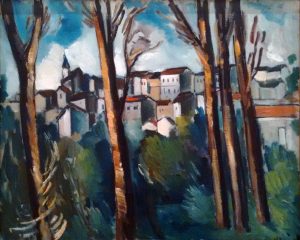 “The Other Town” by Steven Millhauser tells the story of a town which, for some reason, has an exact replica of itself on the other side of the woods. Members of the original town can visit the other town for recreational purposes and can access any part of it, including the inside of any house, which are also exactly the same as their own homes. There is controversy over the other town, as many consider it to be an invasion of privacy that anyone can, at any time, see exactly what is inside their homes (for example, clothes strewn about a bedroom which led to rumors of an affair). However, most still visit and enjoy it. Many become almost obsessed with it, critiquing every tiny detail, such as the pattern of broken glass and the leaves on the trees. The other town was not always as meticulously kept as it is at the time of the story, but people’s close attention to detail has led to the increased accuracy. The other town is paid for by their taxes, after all.
“The Other Town” by Steven Millhauser tells the story of a town which, for some reason, has an exact replica of itself on the other side of the woods. Members of the original town can visit the other town for recreational purposes and can access any part of it, including the inside of any house, which are also exactly the same as their own homes. There is controversy over the other town, as many consider it to be an invasion of privacy that anyone can, at any time, see exactly what is inside their homes (for example, clothes strewn about a bedroom which led to rumors of an affair). However, most still visit and enjoy it. Many become almost obsessed with it, critiquing every tiny detail, such as the pattern of broken glass and the leaves on the trees. The other town was not always as meticulously kept as it is at the time of the story, but people’s close attention to detail has led to the increased accuracy. The other town is paid for by their taxes, after all.
The way that I read it, this story explores themes of the loss of privacy and the breaking down of boundaries. There is debate among the people in the town about the effect that the other town has on their children. Some argue that allowing children to visit the other town disrupts their still-developing understanding of boundaries and encourages “indecent behavior,” citing an incident wherein six children broke into and defaced a home in the original town while the owners were away. Defendants of the other town argue that it is the parents’ fault for “failing to enforce the distinction” between the two towns, and that “childhood disobedience won’t vanish if the other town is abolished.” They also argue that because incidents that severe are rare, they’re not particularly relevant. This argument is very reminiscent of arguments about the type of content children are exposed to through TV, video games, and (most recently) the internet.
There is an element of obsession that runs through the story, which I think is an accurate representation of many people’s reaction to things that push or break boundaries. There is something of this in the idea of internet addiction and parasocial relationships, where individuals will become mildly (or severely) obsessed with people they don’t really know because they have caught a glimpse into their life and become attached. There is an addictive property to feeling like you are privy to something private or secret, even if it is really available for anyone to see (that being either anybody in the town, or anybody on the internet). The story is not a perfect metaphor for the internet—I think it could be applied to a number of different things, such as escapist fiction or even pornography. I think that the internet is a particularly relevant application, so that is the way I read it, but I am interested in other interpretations.

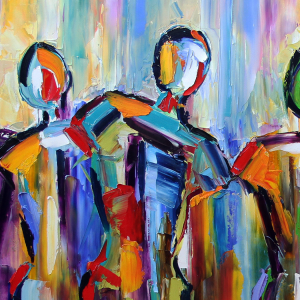 The novel One Hundred Years of Solitude by Gabriel Garcia Marquez has become a classic staple in literature and for good reason. The novel has so many complex layers with many different and complex characters (the majority of whom, for some reason, have the same name). There are so many unique things that intrigue me about this novel that I haven’t seen in many other novels I have read. I feel as though each character has their own story almost as if everyone is a main character in this world. There are some instances where this complexity became a bit messy for me, but I feel like there is an intentional reason for that. Life is meant to be messy, family is meant to be messy, etc. I would love to know the author’s reasoning for creating the characters this way and what it really symbolizes.
The novel One Hundred Years of Solitude by Gabriel Garcia Marquez has become a classic staple in literature and for good reason. The novel has so many complex layers with many different and complex characters (the majority of whom, for some reason, have the same name). There are so many unique things that intrigue me about this novel that I haven’t seen in many other novels I have read. I feel as though each character has their own story almost as if everyone is a main character in this world. There are some instances where this complexity became a bit messy for me, but I feel like there is an intentional reason for that. Life is meant to be messy, family is meant to be messy, etc. I would love to know the author’s reasoning for creating the characters this way and what it really symbolizes.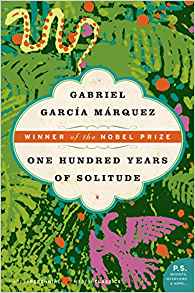 100 Years of Solitude is a story about the Buendía family, whose patriarch founded the town of Macondo and whose line has been condemned to “one hundred years of solitude.” The curse spans from the original marriage of the family’s patriarch, Jose Arcadio Buendía, to Ursula Iguaran, his first cousin. The “curse” is multifaceted, manifesting in a few different ways throughout the story, but especially through a theme of circular time.
100 Years of Solitude is a story about the Buendía family, whose patriarch founded the town of Macondo and whose line has been condemned to “one hundred years of solitude.” The curse spans from the original marriage of the family’s patriarch, Jose Arcadio Buendía, to Ursula Iguaran, his first cousin. The “curse” is multifaceted, manifesting in a few different ways throughout the story, but especially through a theme of circular time.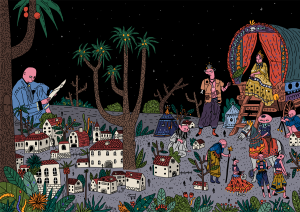
 gh the usage of nicknames (with most tending to stick with them throughout the entirety of the novel) and clear indications about who is who, regardless of how often I lost focus and had to return to previous passages to make sure I knew which Arcadio or Aureliano had died or done something stupid. However, the availability of a family tree at the beginning of the book does act as a solid reference for when things do get unreasonably complicated.
gh the usage of nicknames (with most tending to stick with them throughout the entirety of the novel) and clear indications about who is who, regardless of how often I lost focus and had to return to previous passages to make sure I knew which Arcadio or Aureliano had died or done something stupid. However, the availability of a family tree at the beginning of the book does act as a solid reference for when things do get unreasonably complicated. of prophesied destiny; an inescapable fate; a neverending cycle. The unfortunate predictability that these names seem to carry contributes to the idea that they are unable to be released from the grasp of inevitability clinging to their familial misfortunes.
of prophesied destiny; an inescapable fate; a neverending cycle. The unfortunate predictability that these names seem to carry contributes to the idea that they are unable to be released from the grasp of inevitability clinging to their familial misfortunes.
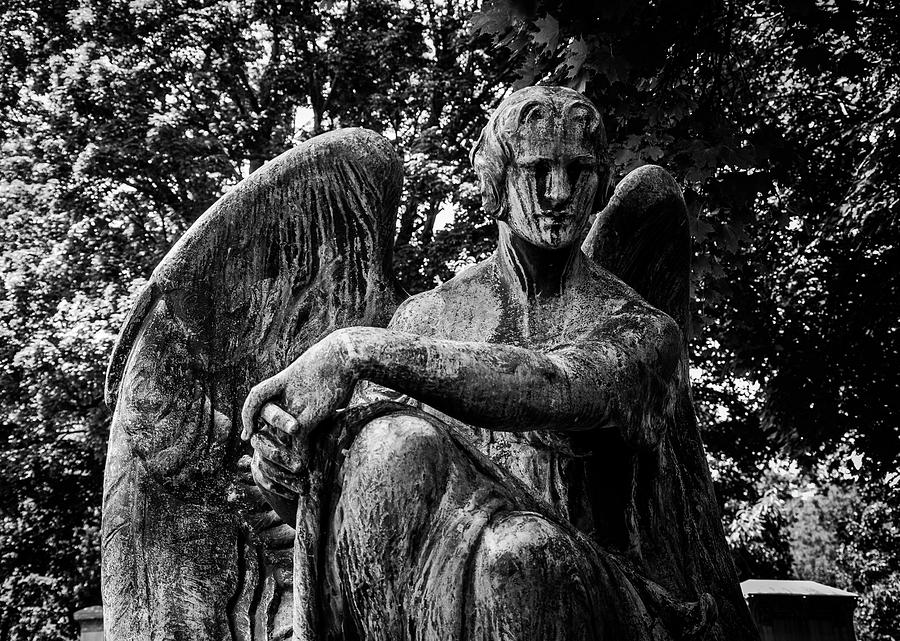
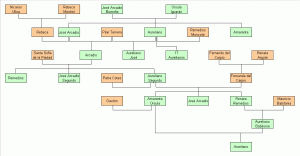 Gabriel Garcia Marquez’s One Hundred
Gabriel Garcia Marquez’s One Hundred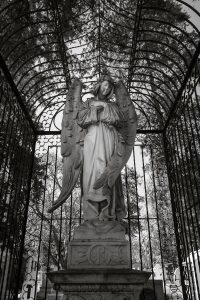
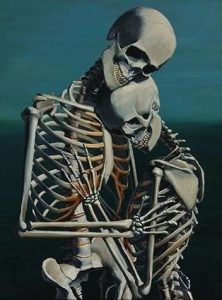 In other words, to be human.
In other words, to be human.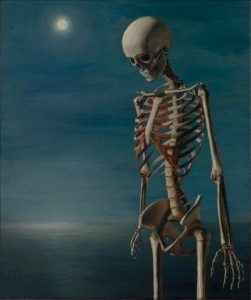 The body of Cassandra is a main focal point of the narration, for every experience, every incident, every recollection, memory, and conversation is centered around and mediated through the body. It seemingly acts as a tool to propel the story forward or bring the story back, using instances of describing her decaying form to tie into the narrator’s experiences of when Cassandra was alive and her body was different; their situation was different. In this sense, the title perfectly embodies the sensation of a time before and after her death; a Cassandra Before and a Cassandra After. Furthermore, even the examination of an afterlife is dictated by the state of the body; whether or not it should be buried or cremated based on the religious implications experienced by the narrator. Through the traditional Catholic funeral customs, a cremated body’s soul cannot be granted eternal life, and only through an intact burial can the promised land be found, theoretically.
The body of Cassandra is a main focal point of the narration, for every experience, every incident, every recollection, memory, and conversation is centered around and mediated through the body. It seemingly acts as a tool to propel the story forward or bring the story back, using instances of describing her decaying form to tie into the narrator’s experiences of when Cassandra was alive and her body was different; their situation was different. In this sense, the title perfectly embodies the sensation of a time before and after her death; a Cassandra Before and a Cassandra After. Furthermore, even the examination of an afterlife is dictated by the state of the body; whether or not it should be buried or cremated based on the religious implications experienced by the narrator. Through the traditional Catholic funeral customs, a cremated body’s soul cannot be granted eternal life, and only through an intact burial can the promised land be found, theoretically.
